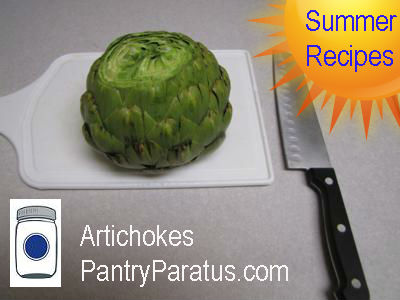Summer Food, Part I: Artichokes
Some background and a simple Artichoke Recipe
“What is an artichoke?,” you ask. It is a good side dish for having friends over to eat with you and your family on the back porch probably because it can be messy and you would have to eat it with people you like to begin with. Try this simple artichoke recipe and let us know what you think.
It is an unlikely vegetable when you look at it because it does not look like something you think that you may want to even eat if you saw one in nature. I have to think that the first person to eat a lobster was pretty brave.
“The vegetable we call the artichoke is actually the unopened flower bud of a plant that is an improved cardoon . . . Charles Perry says the word ‘artichoke’ is derived from the Arabic al’qarshuf, which translates as ‘little cardoon’” (Parsons, 2007)
Here is a cool video of a cardoon, blossoming in time lapse photography:
The part of the artichoke (a sort of thistle) we eat looks like a leaf, but in Botanist speak it is called a “Bract.” When you shop for them in the store, try this tip: when an artichoke is really yummy and at the peak of ripeness the leaves should squeak when you rub them together!
Here is the artichoke recipe our family uses to prepare them.
When you buy it in the store, it will look like this:

Trim the top of the artichoke flat and put the leftovers in your compost bin.
Why compost? Because some other farmer (or you if you grow these) has exported the very best of his/her farm to you and you can redirect the waste and turn it into rich topsoil.
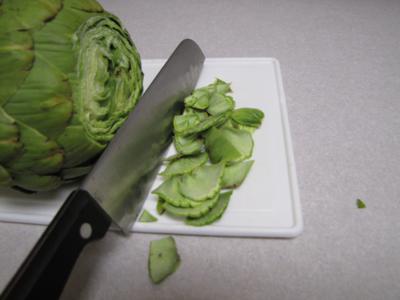
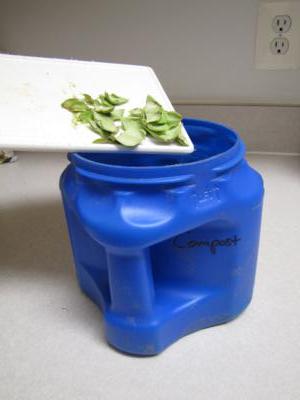
Trim off the bottom about ½” or so from the base.
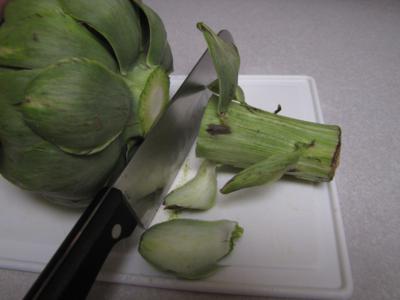
In a pot that is big enough to hold all of your artichokes (you may have to do more than one batch) bring about 2” of water to a boil (add salt if you want to).
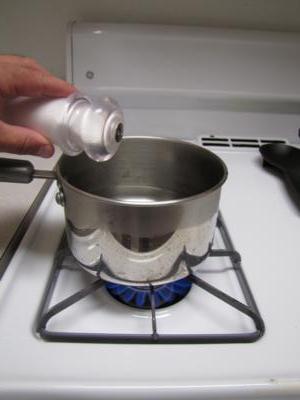
Nest the artichoke(s) in the pot, douse with ~ 1 Tablespoon of olive oil, salt and pepper to taste.
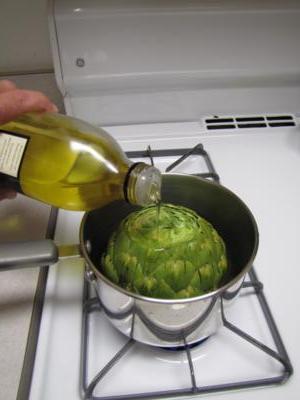
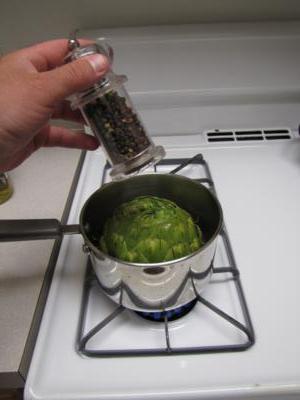
Cover with a tight lid and bring to a boil, then lower the heat to simmer.
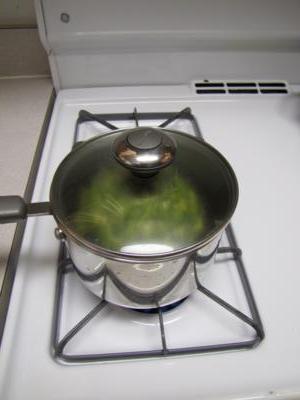
Cooking time will vary widely on the ripeness of the artichoke. Check them after 20 minutes, but 30 minutes is not unrealistic. The color of the artichoke will expectedly change as the cooking progresses—the more interesting part is why that happens:
Most of the qualities and limitations of an artichoke come from the abundance of phenolic compounds that react with oxygen, causing artichokes to turn brown as soon as they are cut. Tannic phenols cause an immediate unpleasant astringent reaction when raw artichoke comes in contact with our salivary proteins. Although cooking fixes both problems, it also causes the flesh to change from vibrant green to drab olive. Some of the phenolic compounds have antioxidant effects and one of them, Cynarin, has the unique ability to make food eaten after a bit of artichoke taste sweet. Cynarin inhibits the sweet receptors in taste buds, so when it is replaced by the next bite of food, the receptors reactivate and the new food taste sweet (Joachim & Schloss, 2008).
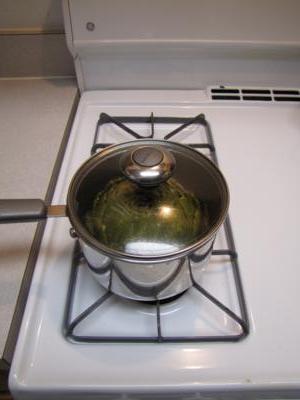
The artichoke is done when the leaves (bracts) pull off easily and fleshy parts are tender.
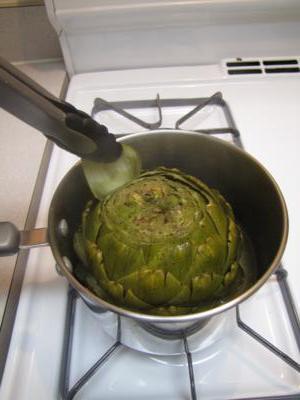
Pull it out, set it in a serving dish.
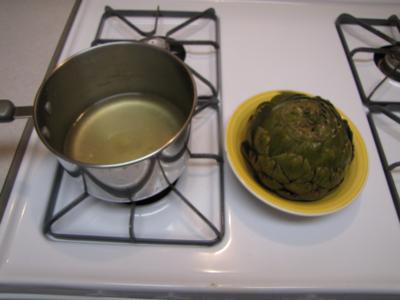
Okay, so cooking an artichoke is not any harder than boiling noodles, so let us get on to the good part—eating it. Pull off one of the leaves (bracts) and put your thumb on the top (where you cut it in step one) of what would be the inner fleshy part.

Put the whole thing in your mouth and bite down just before the part where your thumb is scraping the good stuff off with your bottom teeth. It should look like this when you are done.
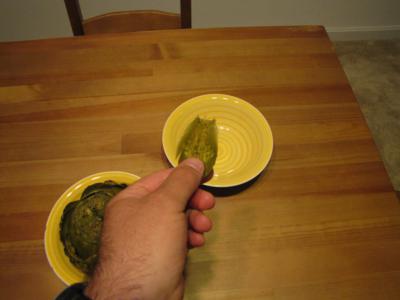
Repeat . . .
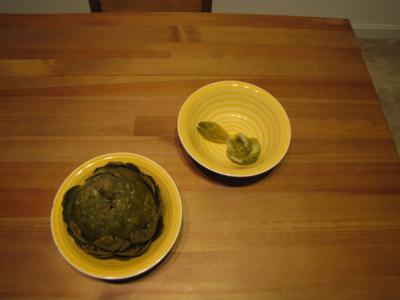
Repeat . . .
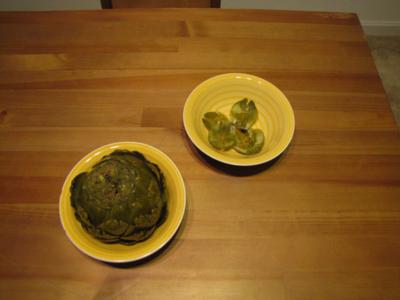
Repeat . . .
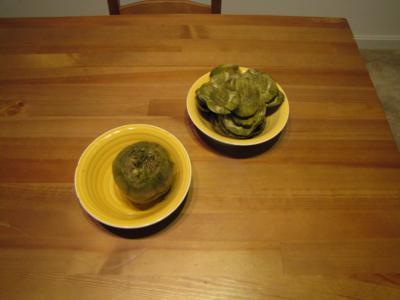
Now you will be getting down to some more rigid parts with purple tips. The going here is slower and the yield certainly less. Keep going though, the best part is yet to come.
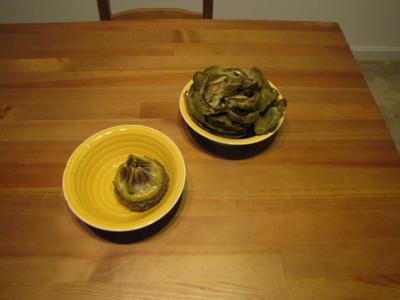
When you get to something like this part, grab a spoon and carve away anything that looks like soft fibers—you should end up with a bowl shaped artichoke heart.
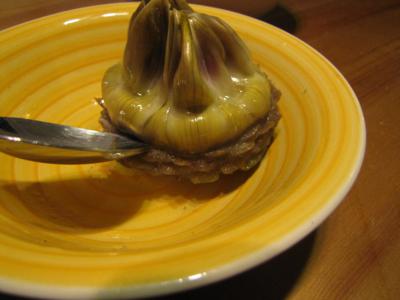
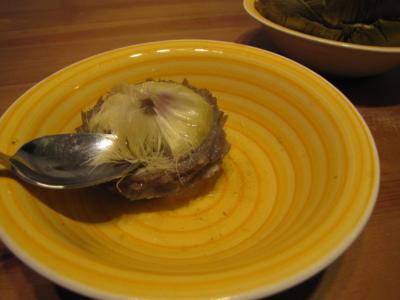
Divide it up and enjoy the artichoke heart!
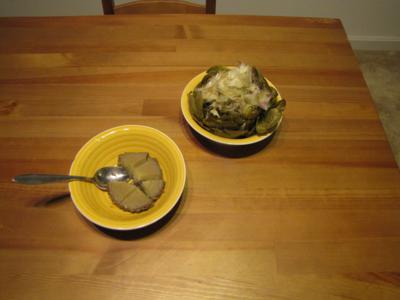
I hope that you start a new summer tradition, with this artichoke recipe. It is one of my favorite summer time treats—leave a comment, let us know how you liked it. If you are looking for a complete meal to try with this artichoke recipe, try this menu from our buddy Ann Marie at Cheeseslave.com.
Wilson
Pro Deo et Patria
Photos Credits:
All photos by Pantry Paratus
Works Cited:
Parsons, R. (2007). How to pick a peach: The search for flavor from farm to table. (p. 35) New York: Houghton Mifflin.
Joachim, D., & Schloss, A. (2008). The science of good food. (p. 30). Toronto: Robert Rose.

